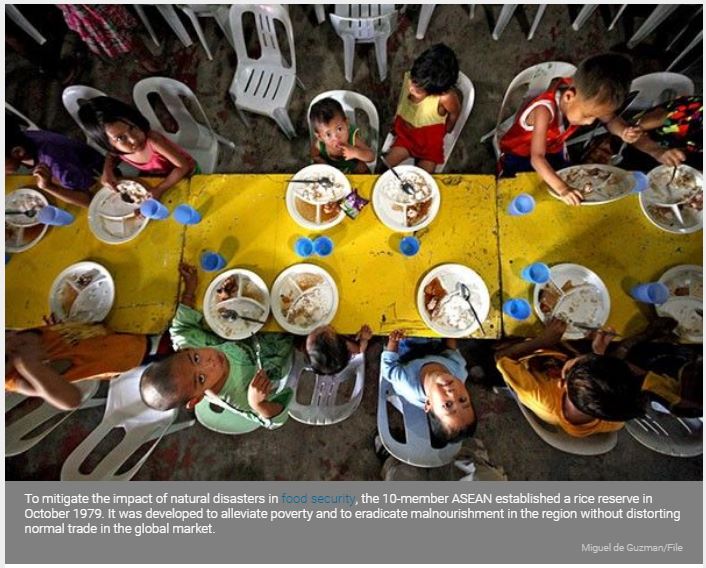Asean urged to improve emergency food aid program
MANILA, Philippines — The Association of Southeast Asian Nations (ASEAN) needs to enhance coordination and response to emergency food aid requirement using its rice reserves especially in times of calamities, according to a new policy brief by the Asian Development Bank Institute (ADBI).
In a recently published brief titled “Building Food Security in Asia through International Agreements on Rice Reserves,” the multilateral development bank’s think tank said the region can sustain the momentum on food security gained from the establishment of rice reserves decades ago by increasing the speed of negotiation, coordination and response for acute and emergency food aid as well as releases post-calamity.
ADBI also urged the regional bloc to boost stocks as these remain inadequate to meet its objectives.
To mitigate the impact of natural disasters in food security, the 10-member ASEAN established a rice reserve in October 1979. It was developed to alleviate poverty and to eradicate malnourishment in the region without distorting normal trade in the global market.
The ASEAN Food Security Reserve (AFSR) agreement created the ASEAN Emergency Rice Reserve. The AFSR entered into force in July 1980. In 2002, this was expanded to the ASEAN Plus Three Emergency Rice Reserve (APTERR) agreement that includes China, Japan and Korea. It entered into force in July 2012.
Under the APTERR, there are earmarked quantities of rice that each county pledges to make available to members during emergencies as well as physical reserves of rice and cash, and other forms of reserves such as future contracts or donations in cash or kind.
Stocks are made available to requesting countries through a three-tier system: Tier 1 – special commercial contracts or sales; Tier 2 – emergency grants and loans; and Tier 3 – donated rice in times of acute emergencies
ADBI said there is a need to increase cooperation and financial support for APTERR as current reserves are not sufficient to meet requirements during emergencies. To illustrate, the present rice demand in ASEAN is 500,000 metric tons per day versus the APTERR emergency rice reserve of only 787,000 MT which is only enough to cover 1.5 days of consumption.
“Second, the parties should increase the speed of negotiation, coordination and response for Tier 3 releases after a calamity,” said ADBI.
For a state to be considered under an emergency condition, it must suffer extreme or unexpected natural or human-induced calamity, is unable to cope through its national food reserve, and is unable to procure the food supply through normal trade.
The request for release of emergency food supply undergoes several processes. First, the country in need must notify other members of the emergency and the amount of rice required. Second, countries negotiate bilaterally on the prices, terms, and conditions of payment. Third, the countries make the necessary arrangements for the release of rice.
ADBI noted that when Typhoon Bopha struck the Philippines in late 2013, members fulfilled the request but the rice shipments were released only 18 months after the emergency.
“The Philippine experience after Super Typhoon Bopha shows that timing is essential. In late 2013 after Super Typhoon Bopha, the Philippines made an emergency request. Members fulfilled the request, but timeliness was a major concern as the rice trickled in even up to 18 months after the emergency,” said ADBI.
Source: https://www.philstar.com/business/2018/08/16/1842879/asean-urged-improve-emergency-food-aid-program#0Olrck5KKHi5HH3A.99


 Thailand
Thailand




